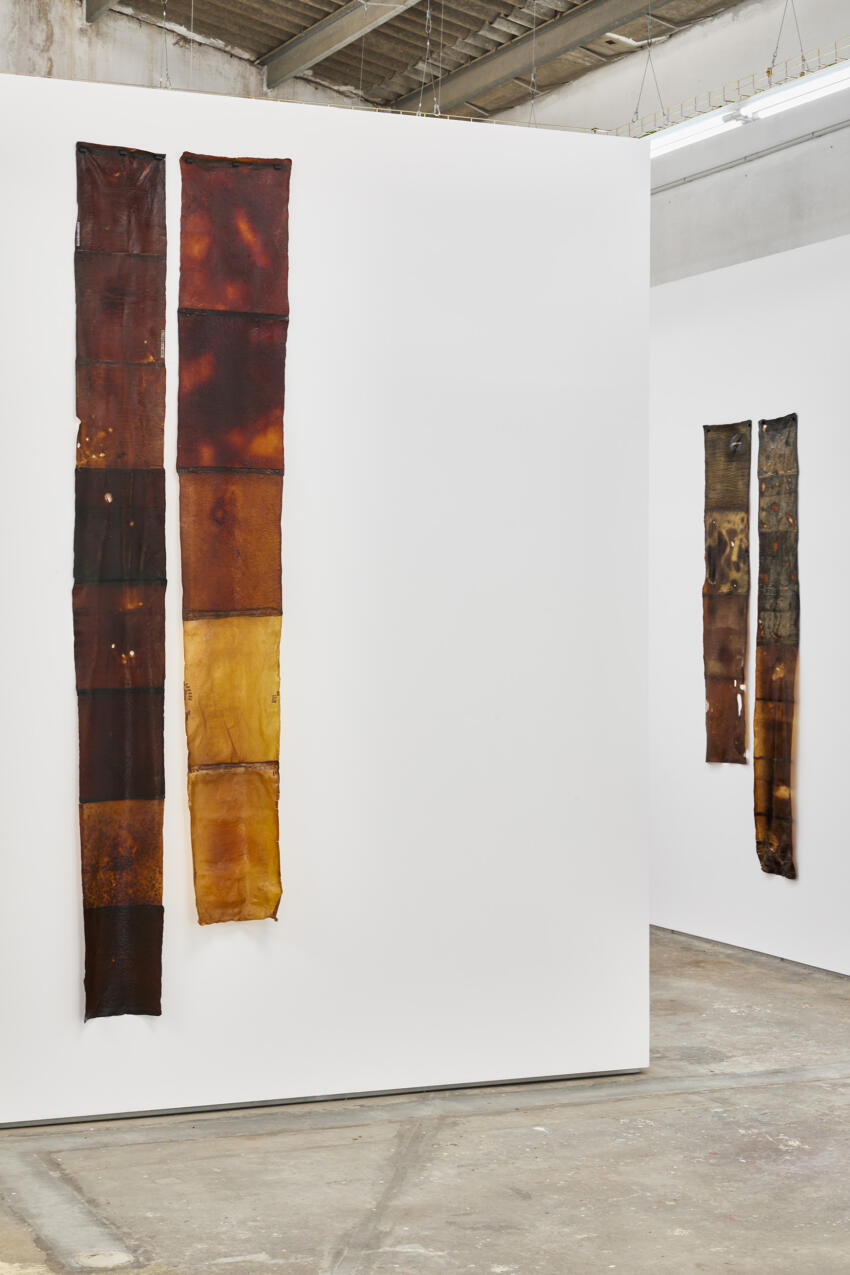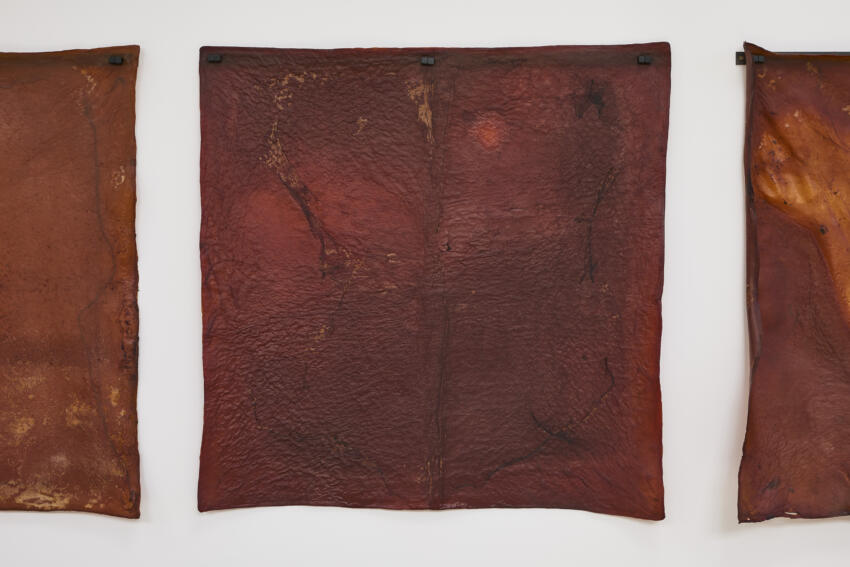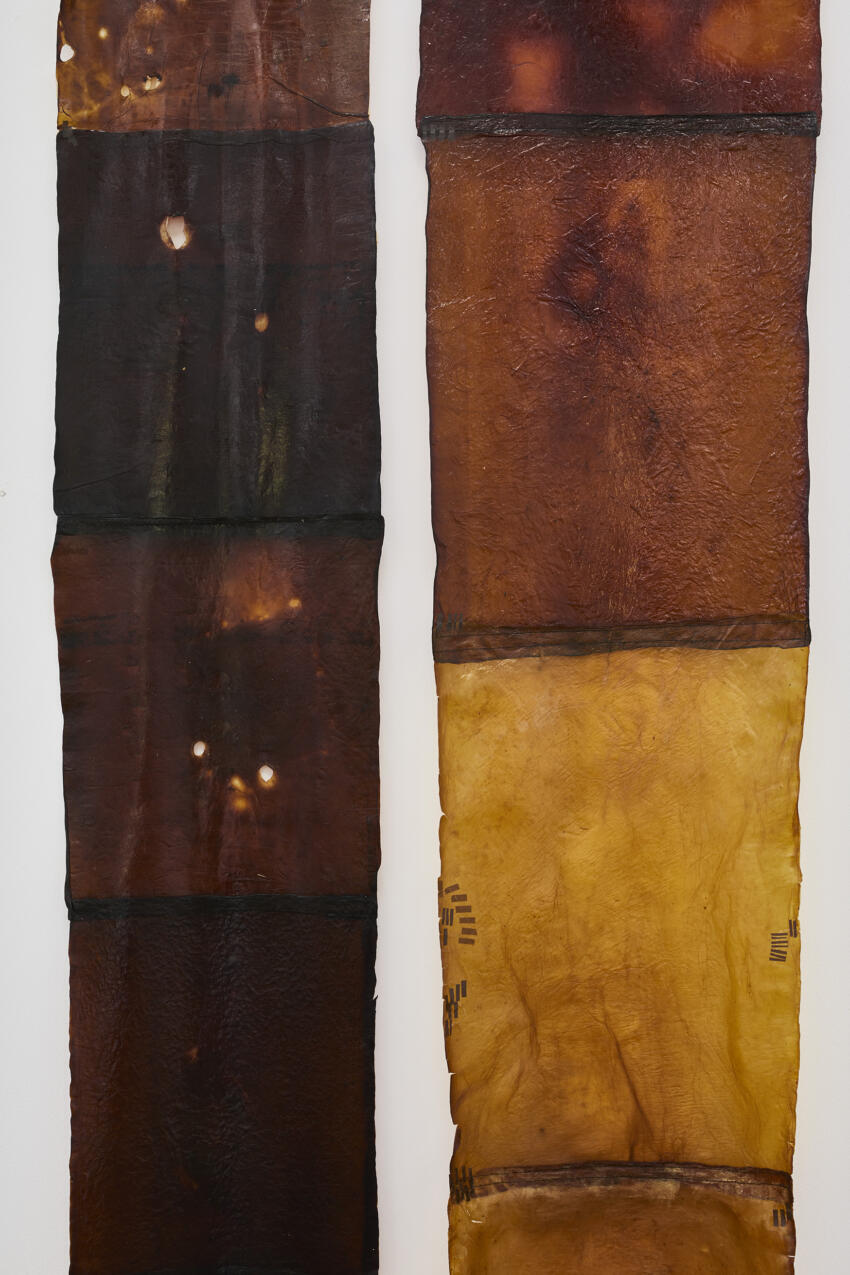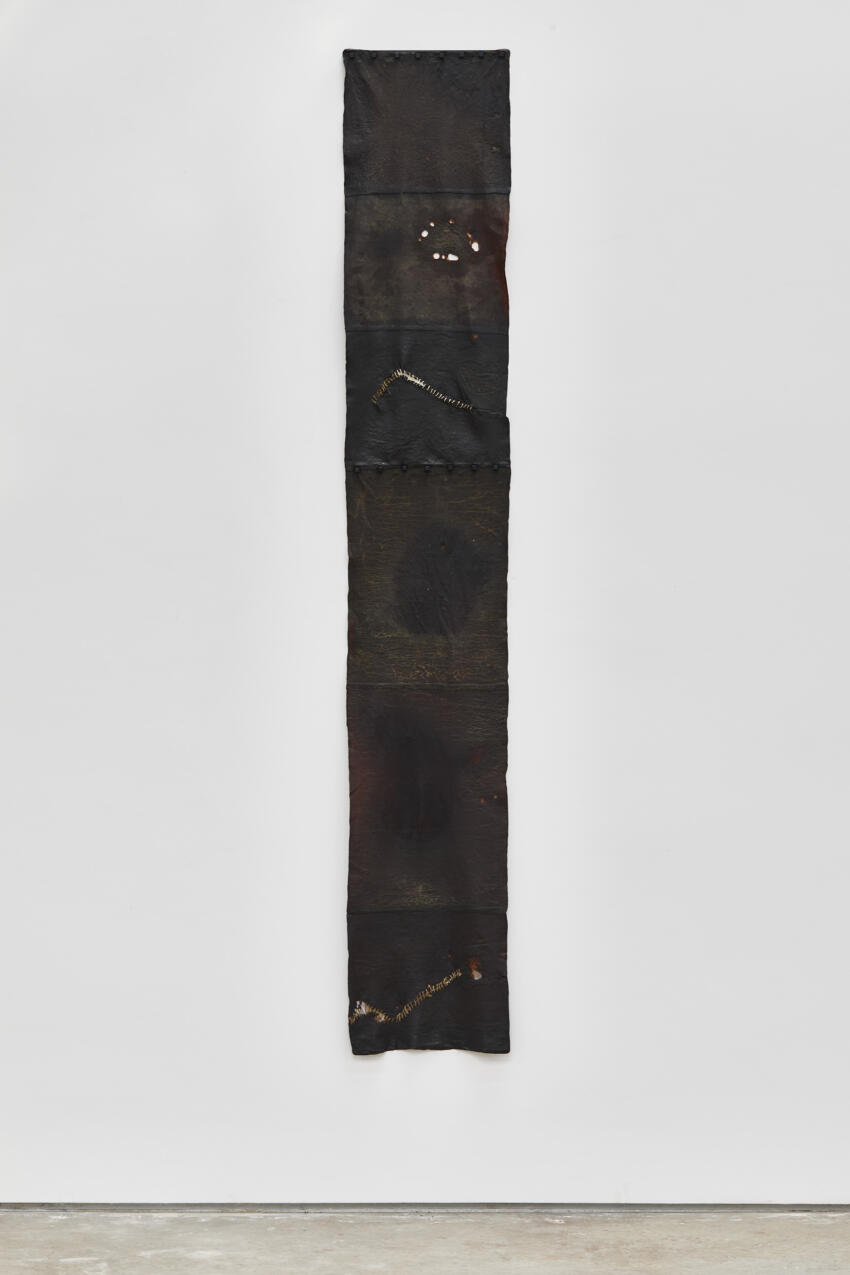Sensorial Skins are grown by bacteria during an acid fermentation process, the result of this action is called ‘vegetable leather’. The Sensorial Skins undergo a visible metamorphosis due to the changing invisible factors as temperature and humidity specific to the location. Since 2015, Anne Marie Maes has been developing organic material by fermenting bacteria and yeasts that leave behind a brownish vegetable leather once they are removed from their substrate. Some skins are colored in the growth medium with natural dyes such as hibiscus and curcuma, while others are colored through capillation processes.
These biofilms, which expand, curl and harden with air temperature or humidity are called Sensorial Skins to emphasize their living and evolving nature. The skin acts simultaneously as a protective layer and as an interface between the external and internal environments. The microbiological world thus exposes itself to our gaze in the form of these rectangular skins displayed on walls or presented in light boxes where every line and detail of their matter is accentuated. The roughness of these membranes indicates their origin as the fruit of an agglomeration of different bacterial colonies. The resulting skins can then be read as topographic maps bearing the marks of their gradual aging.

Diptique SS-1, 280cm x 73cm

Diptique Sensorial Skin-2, 212cm x 80cm

3 Sensorial Skins, 2023 (Earl Grey 76cm x 74cm; Hibiscus 75cm x 75cm, Gunpowder 77cm x 76cm)

Diptique SS-1, 280cm x 73cm (detail)

Sensorial Skin – archaïc black, 200cm x 42cm